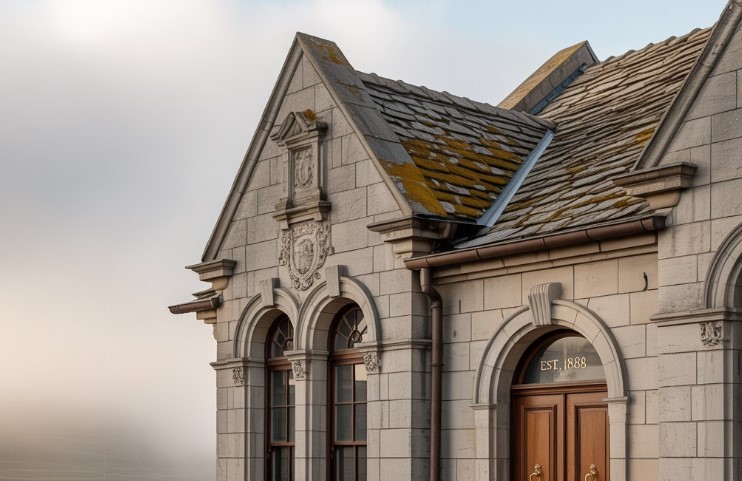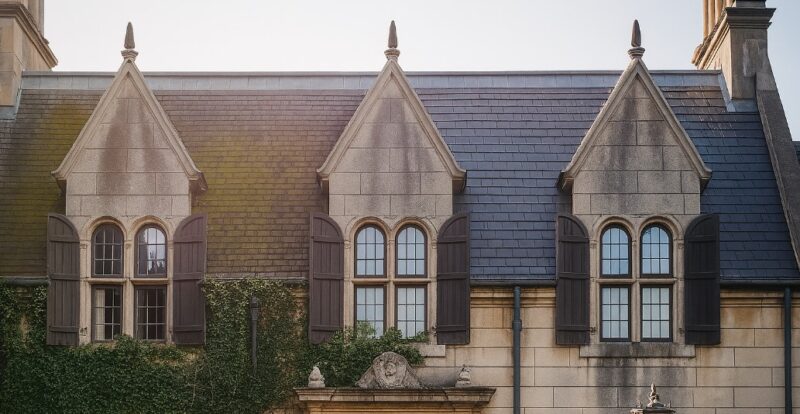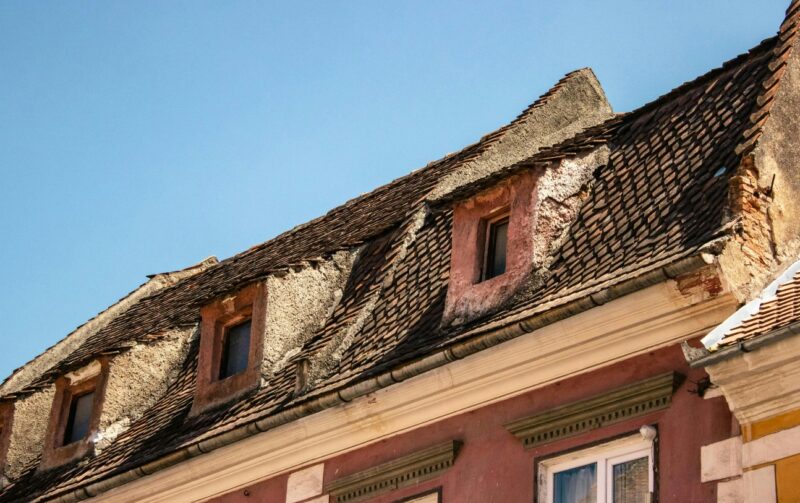The charm of historic buildings is undeniable. However, maintaining these architectural gems poses its own set of challenges. At the heart of these challenges lies the pressing need for modern roofing techniques. As much as we adore the aesthetics of our old buildings, it’s the roofs that keep them standing.
The Leaky Reality

Let’s not sugarcoat it, old roofs have a tendency to betray us. They leak, crack, sag, and sometimes give in altogether. Materials that once symbolized craftsmanship and artistry, wooden shingles, clay tiles, slate slabs, were stunning in their heyday.
But time has not been kind. Centuries of exposure to rain, snow, searing sun, and freezing winds take a toll. Unlike walls that may remain largely untouched for decades, roofs are constantly battered by the elements.
They are the first line of defense and, ironically, the first to fail. Each raindrop, each snowflake, each blistering ray of sunlight is not just weather, it’s wear. It’s the ticking of a slow, relentless countdown.
What’s at stake is far greater than just a few water stains or a patch of rotting wood. Historic buildings aren’t simply old, they’re narrative vessels. They speak through their gables and chimneys, their ornate eaves and weathered tiles.
They tell stories of the people who built them, lived in them, and passed them down. But as roofs deteriorate, so does the ability of these buildings to stand proudly.
Water intrusion is an especially sneaky destroyer: it seeps into cracks, weakens timber, rusts nails, corrodes iron, and births mold and mildew in dark corners. Before long, a minor leak morphs into a threat to the building’s entire structural and aesthetic integrity.
Invisibility Cloak For Your Roof
When it comes to restoring the integrity of old roofs, homeowners and preservationists alike often worry about disrupting their visual character. Architectural silhouettes, especially those of historic homes or buildings, are more than just aesthetics; they represent heritage, identity, and often, pride.
The good news? Modern roofing technology has made it possible to protect and prolong the life of these structures without leaving a visible trace.
One of the most impressive tools in this stealthy repair arsenal is silicone roof coating. Applied like a liquid and then cured into a seamless membrane, this high-performance coating offers waterproofing and UV resistance that can withstand the harshest of elements.
Similarly, advanced polymer-based sealants can fill cracks, reinforce flashing, and even mend small leaks without ever altering the original look of the roof’s exterior.
These “invisible warriors” operate beneath the radar, shielding your home from water intrusion, thermal expansion, and wind uplift while preserving its historical lines and textures. You won’t see bulky overlays, mismatched tiles, or obtrusive patches. Instead, the home retains its charm while quietly benefiting from 21st-century protection.
So, if you’re staring at a vintage roof with worry, don’t rush into costly overhauls that compromise authenticity. Just call in the stealth tech. Your roof can stay iconic—and now it’s got an invisible shield to prove it.
Keeping the Old, But Inviting the New

Preserving history shouldn’t mean embracing outdated methods. Integrating modern roofing techniques can prolong the life of historical buildings without sacrificing their charm. Fortunately, technological advancements in roofing materials have paved the way for solutions that strike a balance between preservation and protection.
Another important consideration in adopting these techniques is locating experienced contractors familiar with creative approaches. Seeking guidance from an established Phoenix roofing company can offer insights into present-day solutions tailored specifically for historic buildings, ensuring durable results while respecting their original charm.
Innovative roofing strategies include customized insulation solutions that marry thermal comfort with aesthetic fidelity. By focusing on both energy retention and historical accuracy, building conservation can leap forward, helping these properties remain comfortable sanctuaries in various climates. By adopting insulation solutions that mirror historical performance standards, renovators make strides in keeping the old structure environmentally aware and inviting.
Modern Materials, Classic Aesthetics
Today’s roofing materials offer durability that older alternatives simply lack. Technicians have synthesized materials to mimic traditional styles while offering enhanced functionality. Want your building to have that charming clay tile look? There’s a long-lasting synthetic option for that. And what about those iconic slate tiles? Yeah, there’s a version now that’s tougher and lighter.
As we explore these new material options, it becomes imperative to consult with architectural historians and conservationists. Their expertise ensures that substitutes not only look the part but also honor the building’s historical narrative. By collectively working through decisions, we ensure that authenticity isn’t lost amid the pursuit of durability, providing an outcome that satisfies both ethical preservation norms and practical considerations.
Energy-Efficient Preservation
Surprise! With modern roofing, you can get the best of both worlds—historical authenticity and energy efficiency. Reflective and energy-efficient roofing materials can be seamlessly integrated into historic structures. Ensuring buildings remain cool during the summer or warm during the chilling winters is key to preservation, not only for the structure, but for its inhabitants as well.
Seeking Skilled Hands
Finding the right contractor isn’t easy. Historical buildings require nuanced care. You want someone who understands the worth of their craftsmanship. Hiring a contractor is like dating: if they can’t appreciate your past and help build your future, walk away.
A Call to Preservationists
Here’s the bottom line: don’t let the ghosts of roofing past dictate the future of our historical landmarks. We need to re-evaluate current practices and prioritize roof preservation in the fight against the elements. When we consider the importance of historic building preservation, ignoring roofs is like wearing a polyester suit on a tropical beach. No one wins.
By championing a respectful marriage between old aesthetics and new-age technology, architects and preservationists can seize the opportunity to preserve our shared heritage without compromising its original story. As technology advances, it brings with it a chance for our cherished historical sites to secure their legacy more robustly and graciously than ever before.
In conclusion, it’s high time we married the past with the present. Reject outdated resistance to modern advancements. We owe it to our cultural heritage to keep our historic architecture standing proud. The rooftops of yesteryear yearn for the embrace of today’s innovation. Let’s not disappoint them. It’s not just about protecting our history; it’s about passing it on—intact—to future generations.

